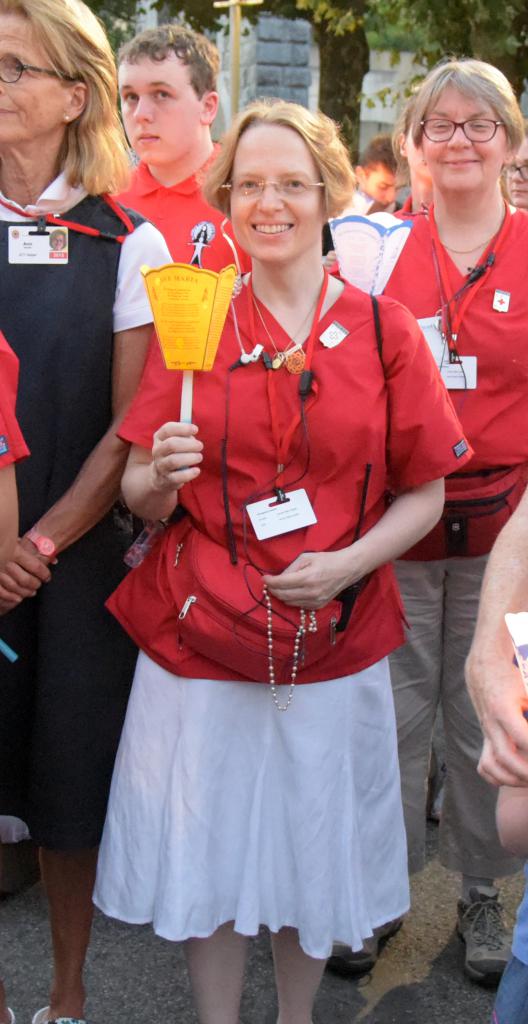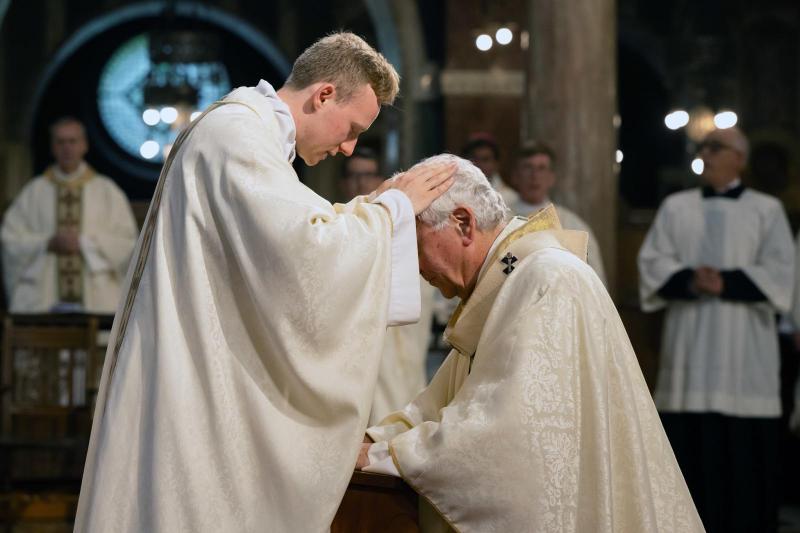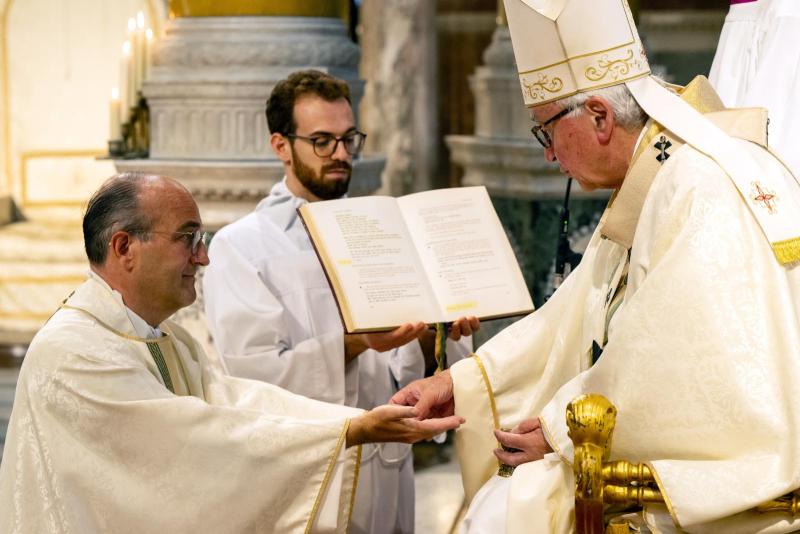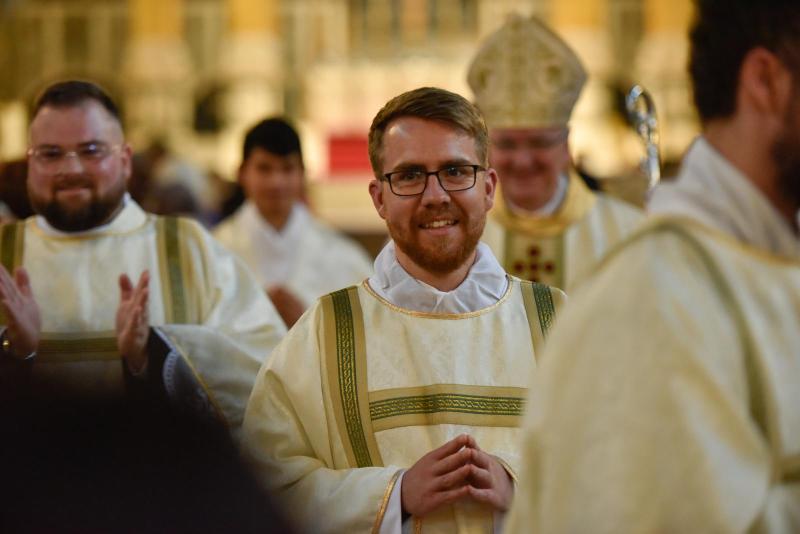This article originally appeared in the September 2015 edition of the Westminster Record following the diocesan pilgrimage to Lourdes.
This year was a very special visit to Lourdes for me.
The only way I have ever been able to leave Lourdes at the end of each pilgrimage has been with a promise to Mary that I will be back. The place has drawn me towards a deeper relationship with Jesus, not perhaps in any overly dramatic way, but steadily and consistently year by year. This year I returned to the UK early to be consecrated a virgin in my parish of Leamington Spa by Archbishop Bernard Longley. This builds on six years ago when I took private vows in a beautiful ceremony in the Sacred Heart chapel of the Accueil St Frai.
There is much in common among the ways of consecrated life, yet God calls each individual uniquely. Perhaps three ideas are specific to the charism of the consecrated virgin’s witness.
First there is the idea of virginity itself being a gift from God to be used for a purpose. Instead of an earthly husband, the consecrated virgin offers herself to the eternal husband for the spiritual benefit of the Church. Of course this highlights the point that in future the whole of the Church, the Bride of Christ, will be eternally espoused to Christ. The very term draws attention to the body; and what one does with the body has spiritual significance, a living sign of the unity between body and soul. In this way in Lourdes the sick share in their body the suffering of Christ and the able-bodied tend to those who are suffering.
A second aspect of the vocation is in highlighting the complementarity of the sexes, with equality in dignity but difference in roles. Unlike most religious vocations the order of consecrated virgins is only open to women, in parallel with how the priesthood is only open to men. Here is a sign to the world that God had a reason and purpose when he created His image in the world as male and female. It is a very Marian vocation.
Thirdly, an aspect which we share with consecrated widows is that the primary relationship for all of us is the one we have with Christ. While the majority of people live their primary relationship through a spouse or a community, consecrated virgins and widows live their life as a sign to the world that it is possible to live a worthy and holy life in aloneness. As such this is a sign in empathy with the many people who through no choice of their own find themselves in a life of loneliness.
In many ways consecrated virginity is a hidden life. We have a ring as a symbol of our marriage to Jesus and serve those with whom we come into contact through our ordinary lives. Consecrated virgins do not make the promise of poverty, as they must earn their own living. In my case I work in human fertility, both in making known God’s plan for it as well as managing a clinic offering a humane alternative to IVF which enables couples to achieve natural conception even when it was thought impossible.
Why did I open myself to this pathway among the many ways of consecrated life? I had heard about this as a teenager, yet it wasn’t until I realised the perfect fit from a theological perspective with my work at Life Fertility Care that it all made sense and fell into place for me as my vocation.




